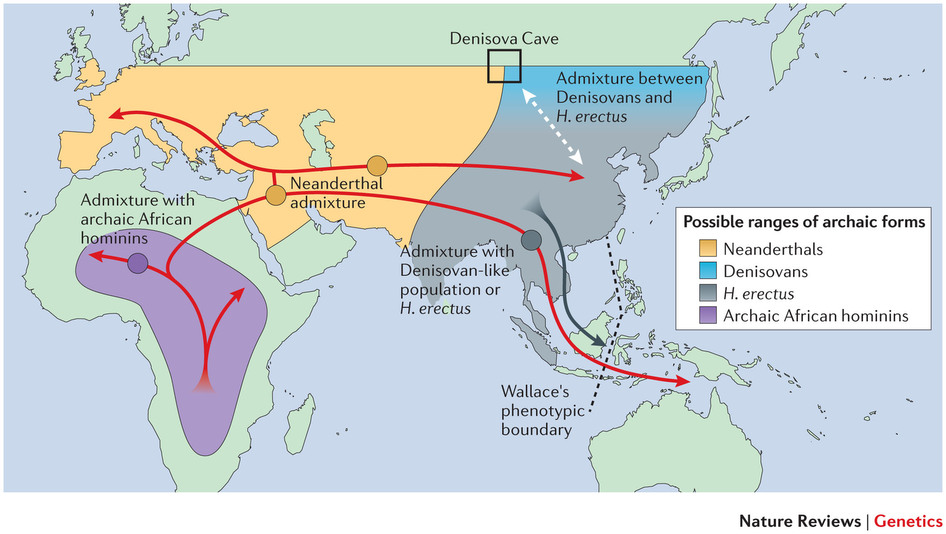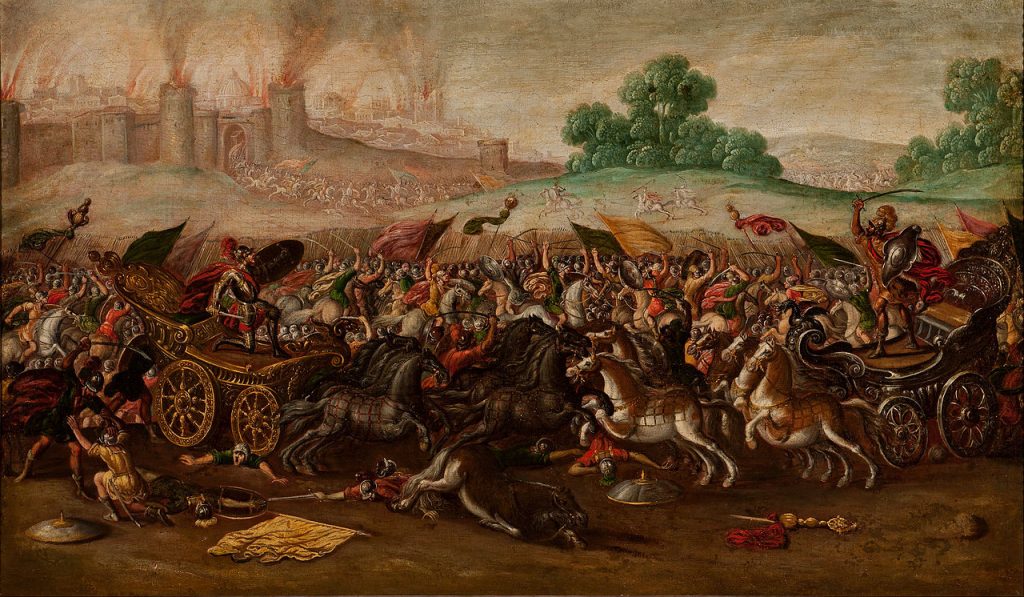Brought myself up with the latest discoveries on human origins last night with BBC doco The Lost Tribes of Humanity. It told me that everything I had been taught about Neanderthals at school was wrong, and enlightened me on how to pronounce this other type of human I’ve come across in my reading from time to time, the Denosivans, introduced me to the term “hominin”, and backed my wife’s suspicion that I probably do carry around Neanderthal DNA in my genome.

Neanderthals
- Neanderthals did leave artistic remains. The marks left on rocks were tested for various options such as side-products of cutting other things like skins on the rock surface and the eventual conclusion was that the marks were made as deliberate designs. (I learned they had no art.)
- Neanderthals adorned their bodies. Remains of certain bones indicate that wings were cut for feathers, not for meat. Feathers in abundance points to body decoration. (That was new.)
- Neanderthals buried their dead.
- They were not wiped out by the arrival of Homo Sapiens. The two types of human lived side by side for thousands of years, probably learning from one another.
- Modern humans interbred with Neanderthals. Most people of non-African origin have some Neanderthal DNA; about 1 to 2 percent on average of their DNA is Neanderthal. (I was taught the two could not interbreed.)
- The above fact indicates that modern humans interbred with Neanderthals very early in their trek out of Africa — probably when they first met Neanderthals in what today is the Middle East. This scenario would explain why modern humans across the globe contain Neanderthal DNA — with the exception of most Africans.
- Possibly up to 50% of all the Neanderthal DNA is still extant today, collectively, in modern humans. (We each contain around 1-2% of Neanderthal DNA but we don’t all contain the same DNA bits.)
Denisovans (D’nEESovins)
- Races native to Australia and Papua New Guinea contain up to 5% of the Denisovan genome. Denisovan DNA is also found among the peoples of India, Himalayas and China. Up to 60 to 80% of Denisovan genome may be spread around in modern humans.
“The Hobbit” / Homo floresiensis
I was following the controversy surrounding these bones when they were first discovered in Indonesia and for a time was unsure if we would find we had a new type of human species or modern human inflicted with something like dwarfism. But the jury has apparently long been in by now and they definitely have been classified as a distinct variety of human.
Interestingly their small size was not the effect of being cut off on the island (animals so cut off tend to become smaller, presumably because less resources are therefore required to survive) but they were found to be small before their settlements were cut off by rising seas.
Though they have left remains indicating their human-ness their brains were the size of chimp brains. Sounds bad for a human, perhaps, but then as someone else pointed out recently on another program, we now know from our technological advances that it is not the size of a computer that matters so much as how it is organized. Even “bird-brains” can be very intelligent.
Archaic Africans
This group was new to me. We know of their past existence in Central Africa entirely from DNA samples among people of African descent — beginning in a laboratory in San Francisco of all places. They split off from the earliest human line then connected again some millennia later with the line leading to us.
So we don’t even need to dig up fossils to learn of the existence of other species or tribes of humans.
Interbreeding can have been through a range of activities, including adopting orphaned babies and raiding for mates.
My science fiction fantasy: Will we one day be able to piece together all the different bits of remaining DNA from Neanderthals and Denisovans and Archaic Africans and somehow put them together again the way Humpty was sort of reassembled — not literally in laboratories, god forbid, but on paper/digital files — and get some idea what those other branches of hominin were like compared with our pre-mongrel ancestors?

